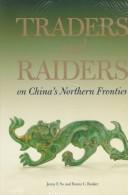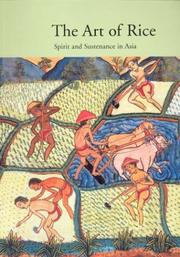| Listing 1 - 9 of 9 |
Sort by
|
Book
Abstract | Keywords | Export | Availability | Bookmark
 Loading...
Loading...Choose an application
- Reference Manager
- EndNote
- RefWorks (Direct export to RefWorks)
Book
Abstract | Keywords | Export | Availability | Bookmark
 Loading...
Loading...Choose an application
- Reference Manager
- EndNote
- RefWorks (Direct export to RefWorks)
Book
Abstract | Keywords | Export | Availability | Bookmark
 Loading...
Loading...Choose an application
- Reference Manager
- EndNote
- RefWorks (Direct export to RefWorks)
Book
Year: 1980 Publisher: Köln Museum für Ostasiatische Kunst
Abstract | Keywords | Export | Availability | Bookmark
 Loading...
Loading...Choose an application
- Reference Manager
- EndNote
- RefWorks (Direct export to RefWorks)
History of Asia --- Asian --- Han [Chinese, culture, style, period] --- China
Book
Abstract | Keywords | Export | Availability | Bookmark
 Loading...
Loading...Choose an application
- Reference Manager
- EndNote
- RefWorks (Direct export to RefWorks)
Han [Chinese, culture, style, period] --- anno 200-299 --- China
Book
ISBN: 9576383021 Year: 1995 Publisher: Taipei SMC Publishing Inc.
Abstract | Keywords | Export | Availability | Bookmark
 Loading...
Loading...Choose an application
- Reference Manager
- EndNote
- RefWorks (Direct export to RefWorks)
Costume --- History --- Manufacturing technologies --- History of civilization --- Chinese textile styles --- clothing --- Taiwanese --- Han [Chinese, culture, style, period] --- Qianlong [Chinese dynastic style] --- Meiji --- Showa --- Taisho --- anno 1800-1999 --- Taiwan
Book
Abstract | Keywords | Export | Availability | Bookmark
 Loading...
Loading...Choose an application
- Reference Manager
- EndNote
- RefWorks (Direct export to RefWorks)

ISBN: 0295974737 9780295974736 Year: 1995 Publisher: Londen University of Washington Press
Abstract | Keywords | Export | Availability | Bookmark
 Loading...
Loading...Choose an application
- Reference Manager
- EndNote
- RefWorks (Direct export to RefWorks)
Han [Chinese] --- decorations [ornaments] --- Applied arts. Arts and crafts --- China --- Decorative arts --- History --- S17/0200 --- S17/0214 --- S17/0900 --- S17/1030 --- S17/2125 --- China: Art and archaeology--Archaeology and prehistory: general and Asia (incl. human palaeontology) --- China: Art and archaeology--Archaeology China: Pre-Han and Han --- China: Art and archaeology--Bronzes: general (incl. Ordos and Northern frontiers) --- China: Art and archaeology--Gold, silver and other jewelries --- China: Art and archaeology--Musea and exhibitions: USA --- Exhibitions --- Han [Chinese, culture, style, period] --- Decorative arts - China - History - Qin-Han dynasties, 221 B.C.-220 A.D. --- Decorative arts - China - History - To 221 B.C. --- decorations [ornamental works]


ISBN: 0930741986 Year: 2003 Publisher: Los Angeles UCLA Fowler Museum of Cultural History
Abstract | Keywords | Export | Availability | Bookmark
 Loading...
Loading...Choose an application
- Reference Manager
- EndNote
- RefWorks (Direct export to RefWorks)
The term Asia is a problematic and highly artificial construct as hardly anything—language, religion, politics, or even geography—unites this huge area. Within the context of this study, however—which focuses on parts of South, Southeast, and East Asia (home to the vast majority of the population)—there exists a unifying factor of paramount significance, and that is rice. Not only is rice the staple food in these regions, it is the focal point of a pervasive set of interrelated beliefs and practices. For those who consume it, this foodstuff is considered divinely given and is felt to sustain them in a special way, one that may be understood as constitutional and even spiritual. This volume explores beliefs and practices relating to rice as they are made manifest in the unique arts and material cultures of the various peoples considered. Incorporating essays by twenty-seven authors representing a wide variety of cultures and writing from diverse perspectives, the book is astounding in its multivocality. The thirty-five lavishly illustrated essays describe rice-related rituals and beliefs in parts of Thailand, Nepal, India, Indonesia, the Philippines, Vietnam, Japan, China, and Korea. Throughout, the juxtaposition of magnificent photographs of works of art—paintings, prints, ceramics, textiles, lacquerware, and sculpture—with objects of a more humble nature—agricultural implements, rice-straw ornaments, cooking utensils, baskets, puppets, votive plaques, and so forth—serves to indicate the striking pervasiveness of rice in all aspects and all walks of life. Wedding ceremonies, parades, festivals, celebrations of birth, rites held to honor the rice goddess, and those performed to insure success at every step in the rice-growing cycle are vividly described and illustrated with striking field photographs. The whole gives the reader the rare opportunity to compare the similarities and the differences with which a rich array of Asian cultures view the food that nourishes them.
Art --- History of civilization --- woodcuts [prints] --- Edo [Japanese period] --- cremation urns --- shadow theater --- Oryza [genus] --- gods [deities] --- goddesses --- rural life --- Asian --- Han [Chinese, culture, style, period] --- Qing [dynastic styles and periods] --- Zen [Japanese Buddhism] --- Philippines --- Bengal --- China --- South Korea --- Japan --- India --- Nepal --- Thailand --- Java --- Bali [island] --- Indonesia --- Vietnam --- Asia
| Listing 1 - 9 of 9 |
Sort by
|

 Search
Search Feedback
Feedback About UniCat
About UniCat  Help
Help News
News